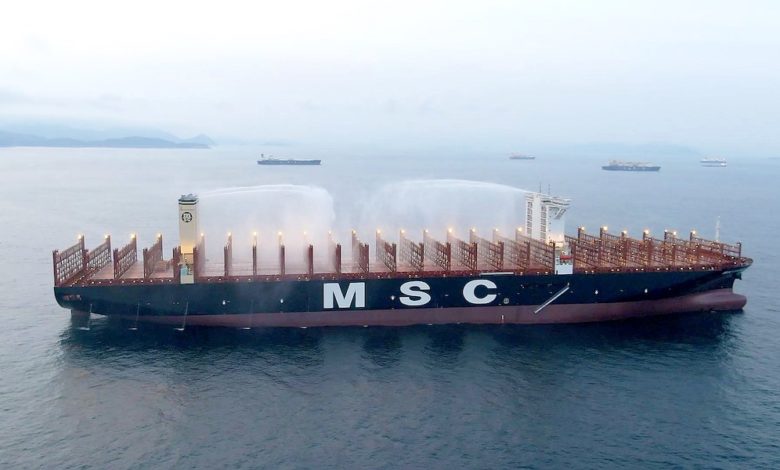MSC sets sights on ammonia dual-fuel ships

Mediterranean Shipping Company (MSC) has tapped class society Lloyd’s Register, German engine manufacturer MAN Energy Solutions and Shanghai Merchant Ship Design & Research Institute (SDARI) for a design for the ammonia dual-fuel operation of a future containership.
A memorandum of understanding between the parties will see the development of technical specifications and associated design documents for a variant of SDARI’s twin island 8,200 teu boxship design for a vessel contracted to LR class by MSC, which should give the Swiss-based liner giant the option of using ammonia as main propulsion fuel for future newbuilding contracts.
SDARI will create the specification and design documentation for the ammonia dual-fuel variant as part of the project, while LR will ensure that the design complies with safety requirements and legislation governing the use of ammonia as a marine fuel. MAN-ES, which plans to introduce a commercial ammonia engine in 2024, with retrofits also possible, will provide data for engine design, ammonia fuel delivery, and emission control systems.
MSC has a large orderbook of LNG dual-fuelled boxships, some of which are already ammonia-ready, including ten 11,500 teu units the company ordered at Zhoushan Changhong International Shipyard for delivery in 2025 and 2026. Meanwhile, other major carriers such as Maersk, CMA CGM and COSCO have opted for methanol dual-fuel ships while the safety of ammonia fuel onboard is being examined.
Giuseppe Gargiulo, head of newbuilding at MSC, said: “Proactive collaboration between ship operators, ship designers, class and engine makers has never been so important. MSC is pleased to enter in this project to evaluate if zero-carbon fuels like ammonia can be safely adopted and the impact they will have on vessel operation.”
Nick Brown, CEO at Lloyd’s Register, added: “The application of ammonia as a marine fuel for the container ship sector will be crucial for our industry to achieve the emission reduction targets set by the IMO and this cross-supply chain collaboration marks a vital step in the maritime industry’s energy transition.”
Ammonia has been widely tipped as a potential marine fuel of the future, most notably in the dry bulk sector, where a recent study from the West Australia – East Asia Iron Ore Green Corridor Consortium suggested ships powered by clean ammonia could be deployed on the iron ore trade routes between West Australia and East Asia by 2028 and reach 5% adoption by 2030. Findings suggest that it is possible to get clean ammonia-powered bulk carriers on the water by 2028, provided the development of key technologies, such as suitable engines, and regulations remain on track.
